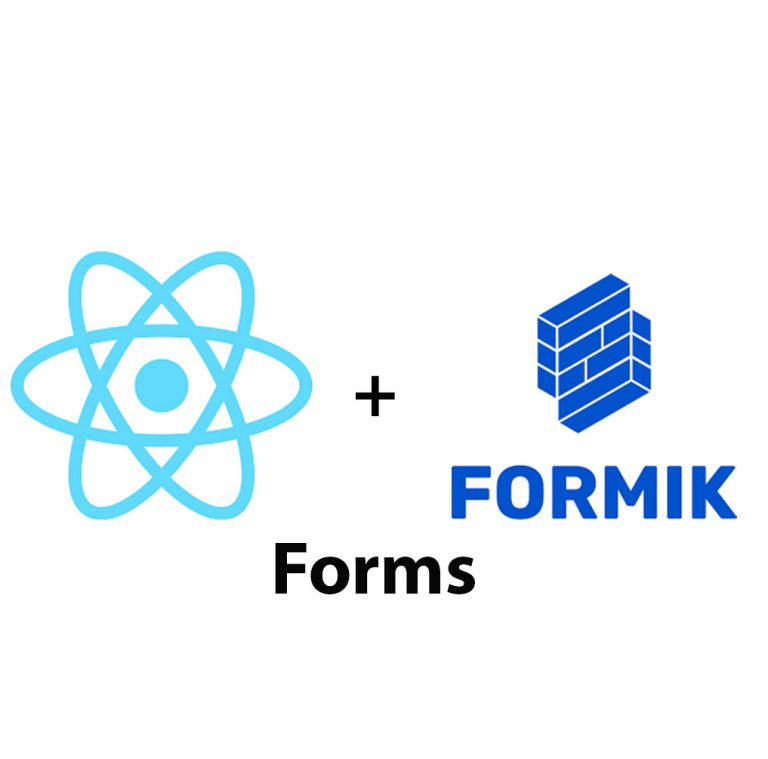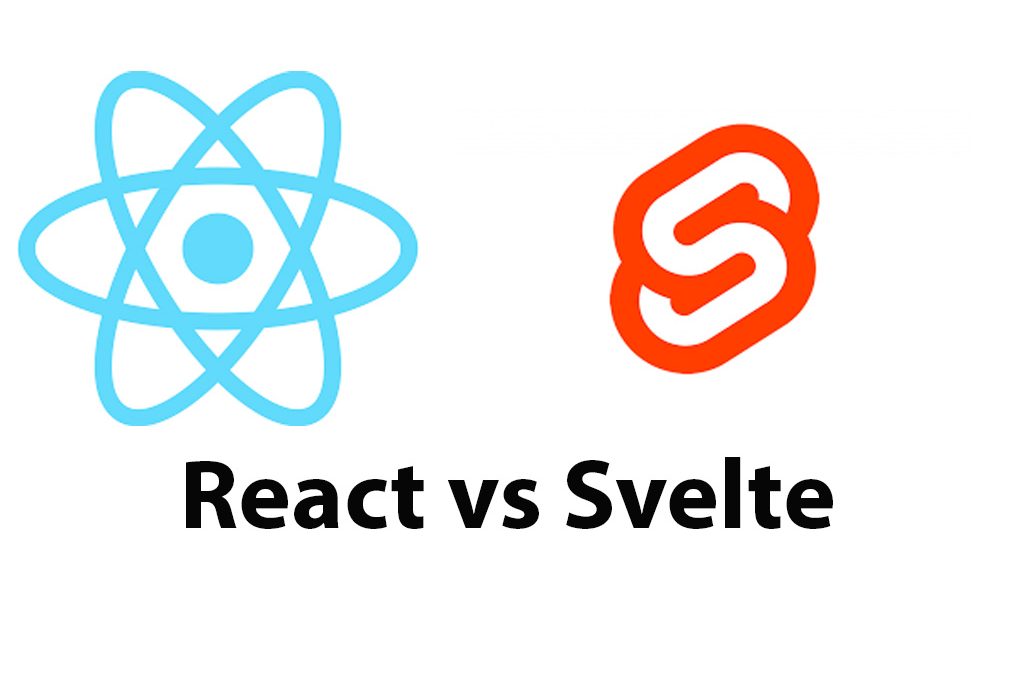Introduction
In the world of web development, there are many frameworks available for use. Two of the most popular frameworks are React JS and Svelte. React JS is an open-source JavaScript library developed by Facebook while Svelte is a relatively new framework developed by Rich Harris in 2016. In this article, we will compare React JS vs Svelte to see how they differ in terms of performance, development experience, tooling and libraries, learning curve, community support, and more.
Overview of React JS
React JS is a library that allows developers to build user interfaces using JavaScript. It was created by Facebook in 2011, and it quickly gained popularity due to its reusability, flexibility, and high performance. React JS uses a component-based architecture, which allows developers to build complex UIs using smaller, reusable components. It also uses a virtual DOM, which makes it faster to render changes than traditional DOM models.
Features and advantages of using React JS
One of the main advantages of using React JS is its reusability. React JS allows developers to create components that can be reused across multiple parts of an application. This makes it easier to maintain code, reduces the risk of bugs, and speeds up development time.
Another advantage of using React JS is its flexibility. React JS can be used with a wide range of tools and technologies, which makes it a great choice for developers who want to build complex applications with lots of moving parts. For example, React JS can easily be used with Redux, a popular state management library.
React JS also has a large and active community, which means that developers can find quick answers to questions or problems they run into. There are many resources available online, including forums, tutorials, and documentation. Additionally, React JS is used by many large companies, such as Uber, Airbnb, and PayPal, which means that it has been extensively tested in real-world scenarios.
Limitations and disadvantages of using React JS
One of the main limitations of using React JS is its steep learning curve. React JS is a library, which means that developers need to have a strong understanding of JavaScript in order to use it effectively. Additionally, React JS has a different way of thinking about UI development, which can be difficult for some developers to wrap their heads around.
Another limitation of using React JS is that it can be verbose. Because React JS is a library, developers need to write a lot of code in order to create an application. This can be tedious, especially for developers who are used to more condensed frameworks.
Overview of Svelte
Svelte is a framework for building web applications that was created by Rich Harris in 2016. It is a relatively new framework, but it has quickly gained popularity among developers due to its simplicity and fast performance. Svelte is different from other frameworks, as it compiles code rather than interpreting it at runtime.
Features and advantages of using Svelte
One of the main advantages of using Svelte is that it is very fast. Because Svelte compiles code rather than interpreting it at runtime, it is much faster than other frameworks. This makes it an ideal choice for developers who are building applications that need to be fast and responsive.
Another advantage of using Svelte is its simplicity. Svelte is designed to be easy to use, even for developers who are new to web development. It is especially useful for developers who are coming from a traditional programming background, as it allows them to write code in a way that is more familiar to them.
Svelte also has a very small file size, which makes it a great choice for mobile applications. Because Svelte is compiled rather than interpreted, it has a smaller file size than other frameworks. This makes it easier to deploy applications on mobile devices.
Limitations and disadvantages of using Svelte
One of the main limitations of using Svelte is that it is a relatively new framework, which means that it does not yet have as large of a community as other frameworks like React JS. This can be a problem for developers who are looking for help or support, as there are fewer resources available online.
Another limitation of using Svelte is that it is less flexible than other frameworks. Because Svelte compiles code at build time, it cannot be used with certain technologies like WebSockets or dynamic loading. This can be a problem for developers who need to use specific technologies in their applications.
Comparison of React JS and Svelte
Performance comparison
When it comes to performance, Svelte is generally faster than React JS. Because Svelte compiles code at build time, it is able to produce smaller and more efficient code than React JS. However, the difference in performance is not usually noticeable in small applications.
Development experience comparison
React JS has a steeper learning curve than Svelte, as it requires developers to have a strong understanding of JavaScript. Additionally, React JS can be verbose, which can be tedious for some developers who are used to more condensed frameworks.
Svelte, on the other hand, is designed to be easy to use, even for developers who are new to web development. Its syntax is similar to traditional programming languages, which makes it easier for developers to write clean and concise code.
Tooling and libraries comparison
React JS has a large ecosystem of tools and libraries available, which makes it a great choice for developers who need to build complex applications. Some popular libraries that can be used with React JS include Redux, MobX, and React Router.
Svelte, on the other hand, does not yet have as large of an ecosystem as React JS. However, this is likely to change as the framework continues to gain popularity. There are already many libraries that can be used with Svelte, including Svelte Material UI and Svelte Store.
Learning curve comparison
As mentioned earlier, React JS has a steep learning curve due to its reliance on JavaScript and its unique approach to UI development. Svelte, on the other hand, is designed to be easy to use, even for developers who are new to web development.
Community support comparison
React JS has a large and active community, which means that developers can find quick answers to questions or problems they run into. Additionally, React JS is used by many large companies, such as Uber, Airbnb, and PayPal, which means that it has been extensively tested in real-world scenarios.
Svelte, on the other hand, is a relatively new framework, which means that it does not yet have as large of a community as React JS. This can be a problem for developers who are looking for help or support, as there are fewer resources available online.
Data Binding Comparison
As two popular front-end frameworks, React and Svelte both offer solutions for data binding, enabling developers to create dynamic and interactive web applications. However, there are some key differences in the implementation of data binding in these two frameworks, and understanding these differences is important when making a choice between the two.
React Databinding
React is a component-based framework that utilizes what is known as a virtual DOM. This means that when changes are made to a component, rather than updating the actual DOM, React updates a virtual version of it, and then compares the new version to the old version to identify what has changed. This process results in fewer changes to the actual DOM, leading to faster rendering times.
React’s data binding works by creating a link between two data sources, such as a user interface element and a piece of data in the application state. React uses what is known as a “unidirectional data flow,” meaning that data can only flow in one direction, from parent components to child components. This data binding is achieved through a series of props, which are essentially just variables passed down from parent components to child components.
React also offers a feature known as “controlled components,” which are UI elements that have their value linked to a piece of state in the application. This makes it easy to ensure that the state of the UI element is always in sync with the application state, as any changes to the UI element immediately update the state.
Svelte Data Binding
Svelte, on the other hand, is a compiler-based framework. This means that rather than running in the client’s browser like React, Svelte compiles the application code into highly optimized JavaScript code that can be sent to the client, resulting in faster load times and better performance.
In terms of data binding, Svelte utilizes a “reactive declaration” system, in which variables can be declared as “reactive” to indicate that they should be updated whenever their underlying data changes. This system operates on a “bidirectional data flow,” meaning that data can flow both from the parent component to the child component and from the child component back to the parent component.
Svelte also offers a feature known as “stores,” which are essentially just containers for application data that can be accessed from anywhere in the application. These stores can be used in combination with Svelte’s reactive declaration system to provide powerful and flexible data binding.
So, how do React and Svelte compare when it comes to data binding? Well, both frameworks offer powerful ways to link UI elements and application data together, but they do so in slightly different ways.
One of the biggest differences between React and Svelte’s data binding systems is the unidirectional vs. bidirectional data flow. While React’s unidirectional data flow offers simplicity and predictability, Svelte’s bidirectional data flow offers more flexibility and power. By allowing data to flow both from parent to child and from child to parent, Svelte allows for more complex interactions between components and enables developers to create more dynamic and interactive applications.
Another difference between the two frameworks is the use of virtual DOM vs. compiler-based systems. While React’s use of virtual DOM allows for faster rendering times and more efficient updates, Svelte’s compiler-based approach offers even better performance by optimizing the code before it reaches the client. This means that applications built with Svelte can load faster and run more smoothly than those built with React.
Finally, Svelte’s use of reactive declarations and stores provides a more elegant and flexible way to handle data binding than React’s prop system. While React’s props work well for simple applications, they can become unwieldy and difficult to manage in more complex applications. Svelte’s reactive declarations, on the other hand, enable developers to declare a variable as “reactive” once and then use it throughout the application without worrying about updating it manually.
In summary, both React and Svelte offer powerful solutions for data binding, but they do so in slightly different ways. React’s unidirectional data flow, virtual DOM, and prop system offer simplicity and predictability, while Svelte’s bidirectional data flow, compiler-based approach, and reactive declarations and stores provide more flexibility and power. Ultimately, the choice between these two frameworks will depend on the specific needs of the application being developed, and developers should carefully consider the strengths and weaknesses of each before making a decision.
State management comparison
State management is an essential component of any modern web application. Managing application state correctly is crucial as it is the deciding factor between creating a functional and efficient application or one that is riddled with issues. When it comes to state management in web applications, React and Svelte are two of the most popular and widely used frameworks. In this article, we will explore state management in React and Svelte, and compare the two to see how they stack up against each other.
React State Management
React is one of the oldest and most widely used JavaScript frameworks. React is based on JavaScript and creates a virtual DOM that identifies changes made in the state of an application. React is known for its component-based architecture, which allows developers to create reusable UI elements and manage state through the use of props.
To manage application state in React, developers use either the Component State or the Redux approach.
Component State
The component state approach in React involves managing the state of a component directly within the individual component. The state is declared within the constructor method and can be accessed and modified using the setState() method. Here is an example:
import React, { Component } from 'react';
class App extends Component {
constructor(props) {
super(props);
this.state = { count: 0 };
}
render() {
return (
<div>
<h1>{this.state.count}</h1>
<button onClick={() => this.setState({ count: this.state.count+1 })}>
Click me
</button>
</div>
);
}
}In the above code, the state count is initialized to 0 in the constructor method. The state count is displayed within an h1 tag. When the button is clicked, the count state is modified using the setState() method.
The benefit of using the component state approach is that it is simple, easy to understand, and does not require the installation of any additional libraries. However, it can become difficult to manage as the application grows in size and complexity. In addition, it is difficult to share state between components with this approach.
Redux
Redux is a popular and widely used state management library for React. Redux is a predictable state container that enforces a strict unidirectional data flow. It is an independent library that can be used with any JavaScript framework.
To use Redux, developers create a store that contains the application state and use actions to modify the state. Here is an example:
import { createStore } from 'redux';
const increment = () => {
return { type: 'INCREMENT' };
};
const decrement = () => {
return { type: 'DECREMENT' };
};
const counterReducer = (state = 0, action) => {
switch (action.type) {
case 'INCREMENT':
return state + 1;
case 'DECREMENT':
return state - 1;
default:
return state;
}
};
const store = createStore(counterReducer);
store.subscribe(() => console.log(store.getState()));
store.dispatch(increment());
store.dispatch(increment());In the above code, the counterReducer function defines how the state will be updated for each action. The store is created using the createStore() method and the reducer function is passed as an argument. The store allows for subscription to changes through its subscribe() method.
Actions are dispatched to the store using the dispatch() method. In this case, the increment() function is called twice resulting in the state of the application being incremented twice.
The benefit of using Redux is that it makes it easy to manage the state of the application as it grows in complexity. Redux also allows for easy sharing of state between components. However, it can add considerable complexity to an application and may require more boilerplate code.
Svelte State Management
Svelte is a relatively new framework that puts a strong emphasis on performance and minimalism. Svelte is a compiler that converts Svelte components into pure JavaScript code at compile time. Svelte does not have a virtual DOM, which means that it updates the DOM directly.
To manage application state in Svelte, developers use the Svelte store approach.
Svelte Store
Svelte stores are similar to Redux stores, but with some crucial differences. In Svelte, stores are reactive variables that can be used to handle application state and can be shared between components. Svelte stores can also be used to listen for and handle changes in the state of an application.
Here is an example of how a Svelte store can be used:
import { writable } from 'svelte/store';
export const count = writable(0);In the above code, an instance of a Svelte writable store is created and exports it to be used in other components. The initial value of the store is set to 0.
The store can then be used in a Svelte component like this:
<script>
import { count } from './store.js';
function increment() {
count.update(n => n + 1);
}
function decrement() {
count.update(n => n - 1);
}
</script>
<h1>{$count}</h1>
<button on:click={increment}>increment</button>
<button on:click={decrement}>decrement</button>In the above code, the Svelte count store is imported into the component. Two functions, increment() and decrement(), are defined to modify the state of the store. The state is modified using the update() method, which takes a function as an argument that receives the current state of the store and returns a modified value.
The value in the store is displayed within an h1 tag. When the increment or decrement button is clicked, the store is updated and the new value is displayed in the h1 tag.
The benefit of using Svelte stores is that it makes it easy to manage the state of the application, share state between components, and listen for changes in the state. Since Svelte does not have a virtual DOM, it updates the DOM directly, which makes it faster and more efficient than React.
Conclusion
Both React and Svelte offer different approaches to managing the state of an application. React uses the component state or Redux approach, while Svelte uses the Svelte store approach. The component state approach in React is simple and easy to understand, but it can become difficult to manage as the application grows in size and complexity. Redux offers a more robust solution to managing state, but it can add considerable complexity to the application. Svelte stores are reactive variables that offer a simpler solution to managing state and can be shared between components. Since Svelte updates the DOM directly, it is faster and more efficient than React.
When choosing between React and Svelte for state management, it is important to consider the needs of the application. For smaller applications with minimal state requirements, the component state approach in React may be sufficient. For larger applications with more complex state requirements, Redux or Svelte stores may be a better choice. Svelte stores offer a simpler solution to managing state and can be more performant in applications with a large number of components.
Use cases of React JS vs Svelte
React JS is a great choice for developers who need to build complex applications, especially those that require real-time updates or state management. It is also a great choice for developers who are already familiar with JavaScript or who want to use specific tools or libraries.
Svelte, on the other hand, is a great choice for developers who need to build fast and responsive applications. It is especially useful for developers who are coming from a traditional programming background or who are new to web development.
Case studies of companies using React JS vs Svelte
Many large companies use React JS in their applications, including Uber, Airbnb, Facebook, and PayPal. These companies have reported that React JS allows them to build complex and scalable applications quickly and efficiently.
Svelte, on the other hand, is a relatively new framework and does not yet have as many large companies using it. However, there are already examples of companies using Svelte, including The New York Times and Cloudflare.
Future trends and outlook for React JS and Svelte
React JS is likely to continue to be a popular framework in the future, as it has a large ecosystem of tools and libraries available and is used by many large companies. However, Svelte is also likely to gain popularity, especially as developers look for ways to build faster and more responsive applications.
Potential areas for improvement for each framework
One area of improvement for React JS could be its verbosity. Some developers find React JS to be too verbose, which can be tedious when building large applications. Additionally, React JS could continue to improve its performance in order to keep up with newer, faster frameworks like Svelte.
Svelte, on the other hand, could continue to improve its ecosystem of tools and libraries in order to make it more versatile and flexible. Additionally, Svelte could focus on building more community support in order to help developers who are new to the framework.
UI Components Comparison
UI components are the building blocks of any frontend application. They are the visual elements that allow users to interact with the application, including buttons, inputs, and forms. In React and Svelte, UI components are created by writing code and can be reused multiple times across the application.
React UI Components
React is a popular JavaScript framework that has been around since 2013. It is known for its component-based architecture, which allows developers to create modular and reusable components easily. React components are written in JSX, a syntax extension that allows developers to write HTML-like code within their JavaScript files. Here are some of the key features of React’s UI components:
- Reusability: React allows developers to write components that can be reused across the application, making it easier to build complex interfaces.
- Props: React components use props to pass data from one component to another. This makes it easy to customize components and allows for better separation of concerns.
- State: React components can also have state, which allows them to update dynamically based on user interactions or other events.
- Virtual DOM: React uses a virtual DOM, which is a lightweight representation of the actual DOM. This allows React to update components more efficiently and reduce the number of browser reflows.
- Component lifecycle methods: React provides lifecycle methods that allow developers to control how a component is mounted, updated, and unmounted.
Svelte UI Components
Svelte is a relatively new framework that was introduced in 2019. It takes a different approach to building UI components compared to React. Svelte’s approach is based on the concept of “compiling” components into optimized JavaScript code. Here are some of the key features of Svelte’s UI components:
- Compiler: Svelte’s compiler is responsible for converting Svelte components into optimized JavaScript code. This means that the final code that’s served to the browser is smaller and more efficient.
- Reactive statements: Svelte components use reactive statements to update the UI. When a reactive statement changes, Svelte automatically updates the DOM.
- Props: Svelte components also use props to pass data between components. However, Svelte’s props are more flexible than React’s because they can be reactive.
- CSS: Svelte allows developers to write CSS code within their components, making it easy to style the UI.
- Component lifecycle methods: Svelte provides lifecycle methods that allow developers to control how a component is mounted, updated, and unmounted, just like React.
Comparison of React and Svelte UI components
Now that we’ve taken a closer look at the UI components in React and Svelte, let’s compare them in more detail.
- Performance
Both React and Svelte are known for their great performance in building UI components. However, Svelte’s approach to compiling components into optimized JavaScript code has an edge over React’s virtual DOM. Svelte’s final code that’s served to the browser is smaller and more efficient, which means faster load times and better performance.
- Reusability
Both frameworks offer high reusability of components. React’s approach to passing data through props and managing the component lifecycle makes it easier to reuse components across the application. Svelte’s reactive statements make it easy to update the UI and reuse components as well.
- Learning curve
React has a steep learning curve, especially for beginners. The JSX syntax can be difficult to learn, and the concept of managing state and props can be confusing at first. Svelte, on the other hand, is more straightforward and has a simpler syntax, making it easier for beginners to get started quickly.
- Developer experience
React has a great developer experience with excellent developer tools such as React Developer Tools and Redux DevTools. Svelte, while relatively new, also has excellent developer tools in the form of the Svelte REPL, which allows developers to experiment and test their components quickly.
- Complex UI
When building complex UI, React can become more complex and harder to maintain. Svelte’s approach to compiling components can make building complex UI easier, which means less code to maintain.
UI Components Final thoughts
Both React and Svelte offer powerful tools for building UI components on the web. While React has been around for longer and has a larger community, Svelte’s approach to compiling components offers a simpler way to build efficient and optimized UI components.
In choosing between React and Svelte, there is no one-size-fits-all solution. It depends on the project’s needs, the team’s experience, and the developer’s preference. Ultimately, whether it’s React or Svelte, the goal is to create UI components that are reusable, efficient, and easy to maintain.
Conclusion
In the battle of React JS vs Svelte, both frameworks have their advantages and disadvantages. React JS is a great choice for building complex and scalable applications, while Svelte is ideal for building fast and responsive applications. Which framework is best for you will depend on your particular needs and experience level. Regardless of which framework you choose, both React JS and Svelte are powerful tools for building modern web applications.

Create A Login Form In React
Creating a login form with React is an essential component in web development that can be accomplished in a few simple steps. In this article, we will walk through the process of creating a login form with React and explore its benefits. Before we begin, let’s take a moment to understand React. React is a […]

How To Use Google Login With React
As a developer, I cannot stress enough the importance of creating a seamless user experience when it comes to authentication. One of the most popular and convenient ways to allow users to authenticate is by using Google Login. In this article, we’ll explore how to use Google Login with React. Before we delve deep into […]

How To Use Environment Variables In React
Introduction Have you ever had to work on a React application and found yourself dealing with different environments or sensitive data? Setting up environment variables can make your life easier and provide a safer way to store information that should not be accessible to the public. In this article, we’re going to look at how […]

Mastering Hooks In React JS
Introduction React JS is a popular JavaScript library that has gained a lot of popularity since its introduction in 2013. It has been adopted by many web developers who use it to build robust and reliable web applications. With React JS, developers can create user interfaces by building reusable UI components, which can be combined […]

Create Forms In React JS Using Formik
Introduction React JS is a widely used system for building complex and dynamic web applications. It allows developers to work with reusable components in a more efficient way than traditional JavaScript frameworks. One crucial aspect of developing web applications is building forms, which are used to collect user input and send it to a server. […]

What Is JSX and how to use it.
Introduction As a web developer, I’m always on the lookout for new tools and technologies that can help me write better code faster. One tool that has caught my attention lately is Typescript JSX. In this article, I’m going to share my experience learning Typescript JSX and the benefits it has brought to my development […]

